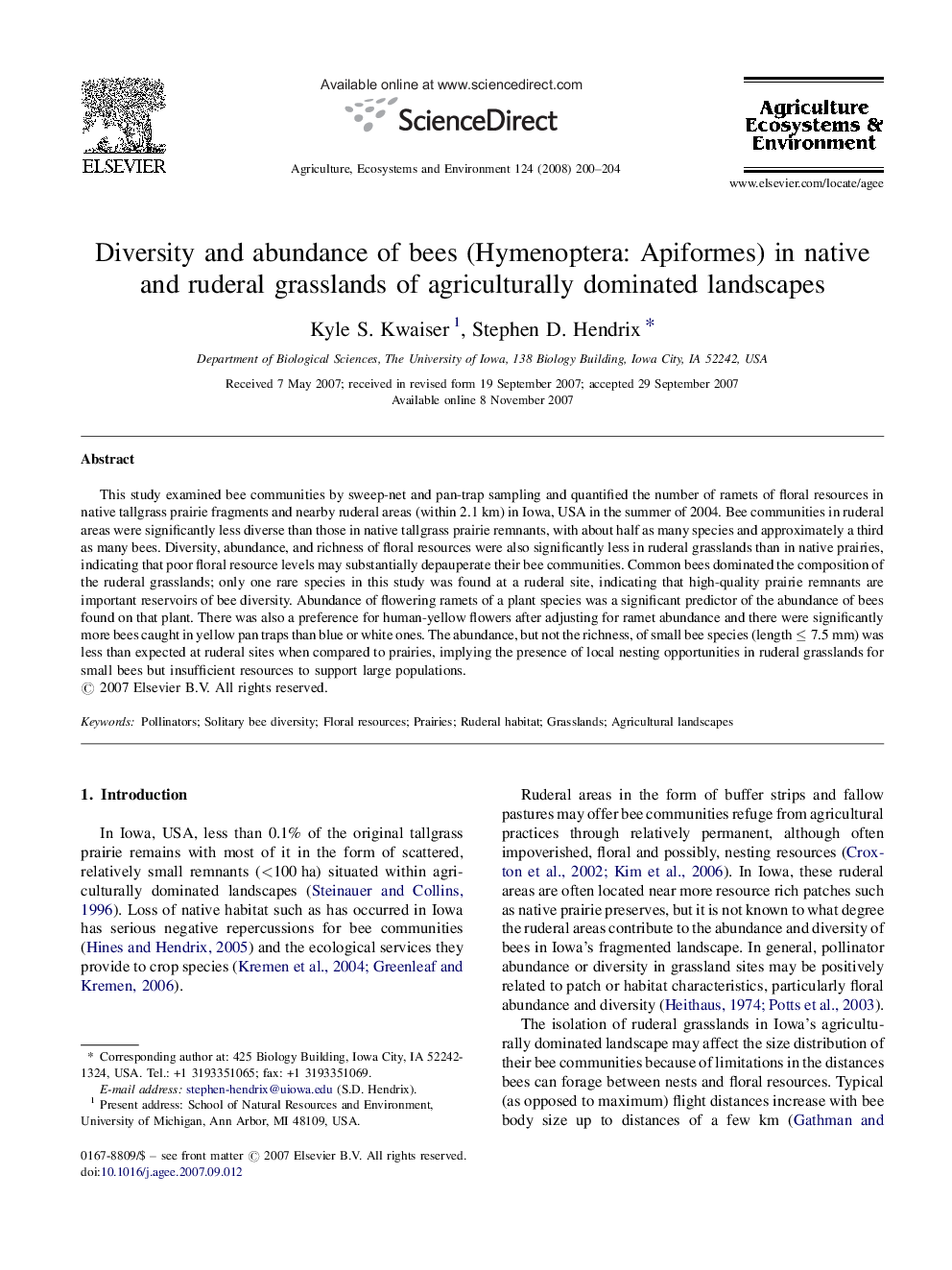| کد مقاله | کد نشریه | سال انتشار | مقاله انگلیسی | نسخه تمام متن |
|---|---|---|---|---|
| 2415450 | 1552137 | 2008 | 5 صفحه PDF | دانلود رایگان |

This study examined bee communities by sweep-net and pan-trap sampling and quantified the number of ramets of floral resources in native tallgrass prairie fragments and nearby ruderal areas (within 2.1 km) in Iowa, USA in the summer of 2004. Bee communities in ruderal areas were significantly less diverse than those in native tallgrass prairie remnants, with about half as many species and approximately a third as many bees. Diversity, abundance, and richness of floral resources were also significantly less in ruderal grasslands than in native prairies, indicating that poor floral resource levels may substantially depauperate their bee communities. Common bees dominated the composition of the ruderal grasslands; only one rare species in this study was found at a ruderal site, indicating that high-quality prairie remnants are important reservoirs of bee diversity. Abundance of flowering ramets of a plant species was a significant predictor of the abundance of bees found on that plant. There was also a preference for human-yellow flowers after adjusting for ramet abundance and there were significantly more bees caught in yellow pan traps than blue or white ones. The abundance, but not the richness, of small bee species (length ≤ 7.5 mm) was less than expected at ruderal sites when compared to prairies, implying the presence of local nesting opportunities in ruderal grasslands for small bees but insufficient resources to support large populations.
Journal: Agriculture, Ecosystems & Environment - Volume 124, Issues 3–4, April 2008, Pages 200–204